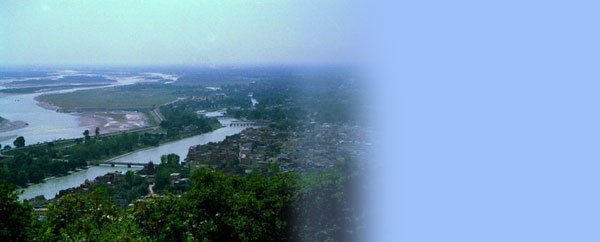Haridwar (Uttarakhand)
Today, it is developing beyond its religious
importance, as a major industrial destination
of state, with the fast developing Industrial
Estate of State Infrastructure & Industrial
Development Corporation, SIDCUL.
Haridwar (Uttarakhand) Hindu Temples

Haridwar pronunciation is a holy city and municipal board in the Haridwar District of Uttarakhand, India. In Hindi, Haridwar stands for Dwar of Hari or Gateway to God, 'Hari' meaning god and 'dwar' meaning gate. Haridwar is regarded as one of the seven holiest places to Hindus.
After travelling 253 km (157 mi) from its source at Gaumukh, 3,139 m (10,300 ft) above sea level, at the edge of the Gangotri Glacier, Ganga enters the Indo-Gangetic Plain of North India for the first time at Haridwar, and this is what gave the city its ancient name, Gangadwára , the place where the Ganges descends to the plains.
According to Hindu mythology, Haridwar is one among the four sites where drops of the elixir of immortality, Amrita, accidentally spilled over from the pitcher, in which it was being carried away by the celestial bird Garuda, after the Samudra manthan. These four spots – Ujjain, Haridwar, Nasik, and Allahabad – have today become places, where the Kumbha Mela is celebrated once every 3 years in any of these 4 places and after a period of 12 years, the Maha Kumbha Mela is celebrated on the 12th year at Prayag in Allahabad. Millions of pilgrims, devotees, and tourists congregate here from all over the world to celebrate the event. They perform ritualistic bathing on the banks of the river Ganga.
The spot where the nectar fell is considered to be the Brahma Kund at Har-ki-Pauri (literally, "footsteps of the Lord," and symbolically the footprints of the Amrita), the most sacred ghat of Haridwar; thousands of devotees and pilgrims flock here during festivals or snan from all over India to take a holy dip. This act is considered to be the equivalent of washing away one's sins to attain Moksha.
The Haridwar district came into existence on 28 December 1988 as part of Saharanpur Divisional Commissionary, and on 9 November, 2000, it became part of Uttarakhand, the 27th state in the Republic of India.
Today, it is developing beyond its religious importance, as a major industrial destination of state, with the fast developing Industrial Estate of State Infrastructure & Industrial Development Corporation, SIDCUL, and the close by township of BHEL (Bharat Heavy Electricals Limited) and its affiliated ancillaries.
How To Reach
By Air:
'Jolly Grant Airport', the only airport of Uttaranchal, is located in Dehradun, 25 km from the main city centre. Flights of Indian Airlines that flies five days a week connects the place to Delhi (258km). So, reaching Dehradun by air is not great problem.
By Rail :
Dehradun is equipped with an excellent system of railways. Dehradun station is an important railhead of the Northern Railways and forms a major stop for trains like the Shatabdi Express, Mussoorie Express and Doon Express. Daily trains can be taken for traveling to Dehradun and cities like Delhi, Mumbai, Kolkata, Varanasi and Lucknow.
By Road:
The roadways are well maintained and well connected and easily make Dehradun accessible from nearby places like Delhi (258km), Haridwar (54km), Rishikesh (43 km) and Mussoorie (30km). Various state-operated and privately owned buses are easily available from these cities. Private tour operators also provide taxis and luxury cars for getting to Dehradun.
Other links
Hindu Temples in India
temples
Uttarakhand